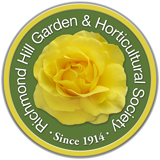This is a great time of year to start planning how to make our gardens more appealing for the coming summer. There are a lot of books and magazine articles out there that you can browse but I thought you might be interested to know more about the criteria used to judge the front gardens for the annual Richmond Hill Blooms event. The event is run by the City with the assistance of several members of our Society who judge the short-listed gardens in each ward. The first time I helped with the judging, I was given the criteria used for judging. Seeing and using those helped me judge the gardens more effectively but also gave me a new perspective when I looked at my garden as well as great insights into what changes I could make so that my gardens more appealing and “all-seasonal”. I hope you too find that these judging criteria provide a solid base for objectively looking at your gardens with a different view in mind than you might normally have.
As it turns out there are 6 sections, or groupings of criteria, for judging each of which has 2 to 7 criteria to be judged. Our Society uses these criteria when we are asked to judge the short-listed gardens in each of the 6 Richmond Hill wards. The scores, when averaged by our 3 judges per ward, give a solid basis to decide which are the top 3 gardens per ward. I helped judge the gardens for the first time 2 summers ago. With each garden, I began to see ways of improving my garden.
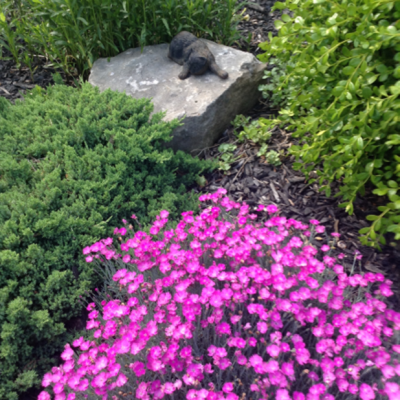 The first section of criteria is Design which looks at colour and texture and how it looks in comparison to your home as well as the balance, rhythm, contrast and dominance of plant material and its scale in proportion to the building. It also looks at elements of design such as space, lines, form, colour, textures, and patterns within each garden and of the garden itself. I’m starting to think about adding a small Japanese maple next spring and perhaps a taller, shaped evergreen to provide balance to the left of my house. And more varieties of plants to add colour and varying plant textures.
The first section of criteria is Design which looks at colour and texture and how it looks in comparison to your home as well as the balance, rhythm, contrast and dominance of plant material and its scale in proportion to the building. It also looks at elements of design such as space, lines, form, colour, textures, and patterns within each garden and of the garden itself. I’m starting to think about adding a small Japanese maple next spring and perhaps a taller, shaped evergreen to provide balance to the left of my house. And more varieties of plants to add colour and varying plant textures.
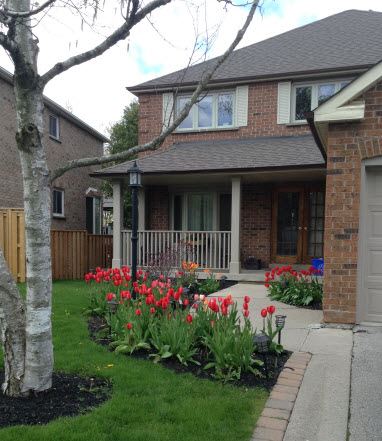
Another aspect of Design is the year-round appeal of the garden. I have a great spring tulip display in spring sporting over 200 tulips when all are in bloom and a reasonable summer showing of perennials; but I have nothing for fall nor winter. To make my garden more colourful and cheerful year-round, I’ve started to add fall plantings (ex. Mums) and winter shrubs which provide year-round greenery. I’m also looking at flowers that have a longer blooming season. Nasturtiums were a good find as were Marigolds which also repel insects and small animals. And each of those plants can self-seed for the next season.
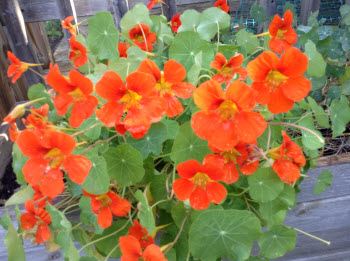
- The second grouping of criteria looks at the use of plant material. Do you have native plants and no invasive plants? Do you have both perennials and annuals in your garden? Are the plants suitable for your location? (Consider the amount of sunlight, shade, and hardiness on our Zone.) I have mostly perennials and no native plants so last summer I purchased several native plants from the City’s Healthy Yards online plant sale. I also added some annuals and now can enjoy picking out annuals of varying colours and sizes each year to see what I like best!
- Another section considers “Hard Landscaping”
with 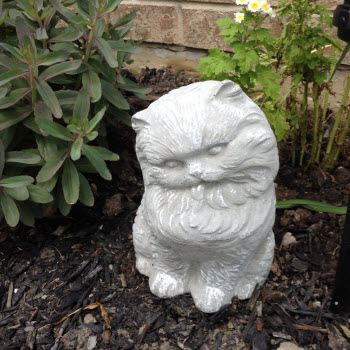 the use of stone, statuary, chairs, etc. Thinking of my garden, my statuary was minimal in the backyard and non-existent in the front yard. I quickly found an adorable cat to grace one section at the front yard, 2 interesting stones that I can grow succulents on, and a wonderful angel giving peace to the garden. I have a nice set of chairs on the porch now so I can sit and overlook the garden. I feel that these small additions make the garden more interesting - inviting you to sit, relax, and look at its variety.
the use of stone, statuary, chairs, etc. Thinking of my garden, my statuary was minimal in the backyard and non-existent in the front yard. I quickly found an adorable cat to grace one section at the front yard, 2 interesting stones that I can grow succulents on, and a wonderful angel giving peace to the garden. I have a nice set of chairs on the porch now so I can sit and overlook the garden. I feel that these small additions make the garden more interesting - inviting you to sit, relax, and look at its variety.
- Yet another examines the condition and maintenance of your yard and gardens. Looking at things such as overall cleanliness of property, driveways, weeds, garbage, etc. These criteria also consider the pruning of hedges, borders being edged, weeds under control, no diseased plants. For lawns & groundcovers, they look to see if there is good, dense growth that is well-maintained. This seemed harder for me to implement at home. I found I had spots of browning grass on my lawn and realized in conversation with fellow gardeners that I had grubs. Strangely, my weed control company that I paid for years said they took care of this but the grubs weren’t listening. Now I buy live nematodes (the best thing to eat grubs) from a local Ontario company, called Natural Insect Control, and spray it on myself at a substantially lower cost. The grub problem is gone but I know one has to respray if and when they return. For weeds, I’ve found 3 very good techniques which you can read about in a prior Gardening Tip. Of those, one is particularly useful for driveways and interlocking stone patios.
- Environmental Practices was the second last section. It was looking for evidence of the usage of rain barrels, mulches, compost but also that no pesticides were being used. This was harder to judge as most people have their rain barrels in the back yard behind a fence and we only judged the front yard of each home. But none-the-less these were useful to consider for my home. I already use mulch and compost and am considering a rain barrel this year. One should be aware that there is a growing trend towards using less mulch. Certain bees that we want to visit our gardens live in the ground and too thick a layer of mulch is a deterrent to those bees.
- The last section looks at how your yard/garden contributes to the neighbourhood. i.e.) does your garden contribute to the beauty of the area? Does it entice others to make their gardens better? What is its overall impact and appeal? This might involve things like colours used in the gardens, and curb appeal. I’ve discovered much of my garden is lacking flowers throughout the summer and I still need more early spring flowers. I tried hyacinths last year which were gorgeous as they first bloomed, but each bloom lasted for only a few days and the total display was done in less than two weeks. For my space, I want to find longer-lasting early and summer flowers. I’ve decided for more curb appeal I may want to extend my front flower beds by making them a bit wider.
With the judging criteria in mind, I found several ways to make even my humble garden more appealing. My garden may not win an award, but it brings me happiness. I’ll continue with my winter and spring planning efforts each year to try out different plants and colours to see what I like the best.
Give it a try and start planning more appeal for your garden one step at a time!
Article and Photos by Doreen Coyne, a member of Richmond Hill Garden & Horticultural Society
